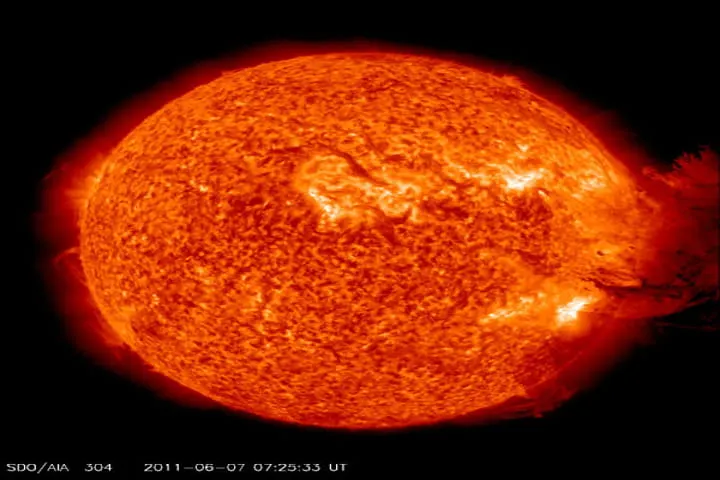Buried deep under the Antarctica and Greenland ice is evidence of a cataclysmic event that shook the planet more than 9,000 years – a solar ‘tsunami’ that hit the Earth as per a report in sciencealert.com.
What brought about this superstorm was the magnetism and hot plasma from the Sun and what makes it significant is that it is larger than any other recorded event like this. It has got the scientific community worried as they wonder as to how they will foresee such an event when the Sun bursts out again.
Solar storms hit the planet once in a few years, when the activity of this star is at the peak, but the recently discovered storm is not only at another level but one which occurred when it was the quiet phase of the solar cycle.
Experts have been continuously warning about how humankind is not prepared for a catastrophe of this scale and what makes it more dangerous is the inability to foresee them and also the fact that infrastructure at present is unsafe from geomagnetic fallout.
When the solar flares strike the earth now, it will affect astronauts and satellites in space, traffic in the air, cables under the sea and grids of electricity and will cause internet outages at global scale and blackouts.
To illustrate how potent solar flares are let us consider what happened in 1859 at a time when at stake was very limited infrastructure. Called the Carrington Event, it was a solar storm which caused a complete collapse of systems of telegraphs in Europe and North America. Besides this, the event caused auroras from Australia to Hawaii to China to Mexico.
Also read: Scientists say that the Sun is bound to burn out – the question is when?
Solar storm is caused by coronal mass ejection or solar flare and it happens when from the Sun energetic particles erupts in billion tonnes into the space. One can imagine the speed at which these particles travel as they can reach earth in 15 hours.
The storm leads to dispersion of radioactive nuclides including carbon-14, beryllium-10, and chlorine-36. The distinct isotopes of these can be found hidden deep in the sediment or frozen in ice and so study of these throw light on the events of the past solar flares.
On examining the Antarctica and Greenland ice cores it was found that they had some of the largest beryllium-10 and chlorine-36 production peaks ever identified in the past. All the proof and its examination point to an extreme solar storm about 9,125 years ago.
Talking about this study, Raimund Muscheler who is a geologist from Lund University in Sweden said: "This is time-consuming and expensive analytical work. Therefore, we were pleasantly surprised when we found such a peak, indicating a hitherto unknown giant solar storm in connection with low solar activity."
In fact, the ratio of chlorine-36 to beryllium-10 isotopes indicates that this happening was far larger than the largest recorded in other ice cores and tree rings whose date has been put as 774.
Also read: Earth’s Black Box being set up in Tasmania to record humanity's end
According to Mushcheler, "These enormous storms are currently not sufficiently included in risk assessments. It is of the utmost importance to analyse what these events could mean for today's technology and how we can protect ourselves."
Details of the study were published in Nature Communications.




















